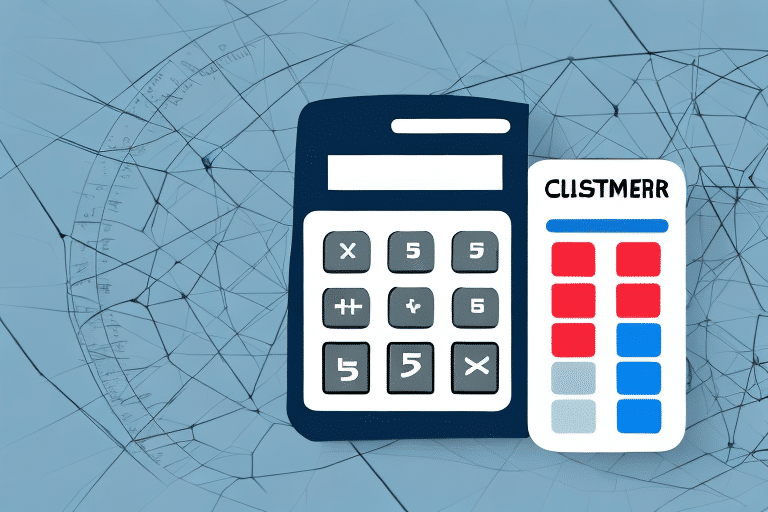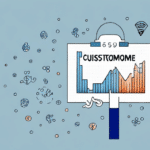Calculate Your Customer Retention Costs with This Essential Guide
As a business owner, it's no secret that customer retention is crucial for long-term success. However, calculating the costs associated with retaining customers can be a complicated process. That's where the customer retention calculator comes in—a simple and effective tool for understanding the financial impact of retaining customers. In this article, we'll explore the importance of customer retention, the benefits of using the calculator, its components, tips for effective use, interpretation of results, case studies, strategies for improving retention rates, the role of customer experience, data analytics, measurement and tracking, common mistakes to avoid, and future trends in customer retention. Read on to learn everything you need to know about customer retention costs and the calculator that can help you manage them.
Why Customer Retention is Vital for Business Success
Customer retention rates are a critical metric for businesses aiming for sustained growth and profitability. Retaining existing customers is significantly less expensive than acquiring new ones, making it essential to have a solid retention strategy in place. According to a [Bain & Company study](https://www.bain.com/insights/loyalty-growth-customer-retention/), increasing customer retention rates by just 5% can boost profits by 25% to 95%.
Enhancing Customer Lifetime Value
One of the key benefits of customer retention is the potential for increased customer lifetime value (CLV). When customers continue to do business with your company over time, they are likely to spend more money and make more frequent purchases, leading to a significant increase in revenue and profitability.
Positive Word-of-Mouth Marketing
Satisfied customers are more likely to recommend your business to others, resulting in new customers and increased revenue. Conversely, dissatisfied customers may share negative experiences, harming your reputation and leading to lost business.
The Benefits of Calculating Customer Retention Costs
The customer retention calculator helps businesses understand the financial impact of customer retention efforts. By analyzing the costs associated with these efforts, businesses gain valuable insights into their bottom line, enabling more informed decisions about resource allocation and prioritization.
Optimizing Resource Allocation
Understanding retention costs allows managers to identify areas where they may be overspending or underspending, enabling them to adjust strategies and optimize spending for the best possible return on investment. This leads to increased customer loyalty, higher CLV, and greater revenue.
Improving Profitability
By effectively managing retention costs, businesses can enhance profitability over time. According to a report by [Harvard Business Review](https://hbr.org/2014/10/the-value-of-customer-experience-quantified), improving customer retention can significantly impact the bottom line.
Components of Customer Retention Costs
Several factors contribute to customer retention costs, including marketing and advertising efforts, customer service expenses, loyalty programs, and other incentives. The calculator helps business owners and managers understand not only the overall expenses but also the individual components that make up those costs.
Marketing and Advertising
Investments in marketing campaigns and advertising initiatives aimed at retaining customers are a significant component of retention costs.
Customer Service Expenses
Providing excellent customer service, including support staff salaries and training, contributes to retention costs.
Loyalty Programs and Incentives
Costs associated with loyalty programs, such as discounts, exclusive offers, and rewards, are essential for encouraging customer loyalty.
Effective Use of the Customer Retention Calculator
To maximize the benefits of the customer retention calculator, consider the following tips:
- Accurate Data Input: Ensure all data entered into the calculator is accurate to reflect your business's unique situation.
- Scenario Analysis: Run multiple scenarios to understand the potential financial impact of different retention strategies.
- Regular Updates: Continuously update the data as your business evolves to maintain the relevance and accuracy of the insights.
Interpreting the Results of Your Retention Calculation
The results from the customer retention calculator provide valuable insights into the financial impact of your retention efforts. Use this information to:
- Benchmark Against Industry Standards: Compare your retention rates to industry averages to gauge effectiveness.
- Analyze Customer Segments: Examine retention rates across different customer segments to identify areas for improvement.
- Assess Customer Lifetime Value: Ensure that the cost of retaining customers does not exceed their lifetime value.
Industry Benchmarks
Understanding where your business stands relative to industry benchmarks can highlight strengths and areas needing improvement. Resources like the [Customer Retention Benchmark Report](https://www.forrester.com/report/The-Customer-Retention-Benchmark) provide valuable comparisons.
Customer Segmentation
Analyzing retention rates across various segments, such as new versus long-term customers, can offer deeper insights into where to focus retention efforts.
Strategies for Improving Customer Retention Rates
Implementing effective strategies is key to enhancing customer retention. Consider the following approaches:
Exceptional Customer Service
Providing prompt, personalized, and effective customer service can significantly boost retention rates. Training staff to handle inquiries and complaints efficiently is essential.
Loyalty and Rewards Programs
Offering incentives like discounts, exclusive offers, or free products/services encourages customers to remain loyal. According to a [Bond Loyalty Report](https://www.bondbrandloyalty.com/resources/reports), loyalty programs can increase customer retention by up to 5%.
Enhancing Customer Experience
A seamless and user-friendly online experience, including a well-designed website, easy navigation, and a simple checkout process, can improve customer satisfaction and reduce cart abandonment rates.
Building a Community
Creating a sense of community around your brand fosters stronger connections with customers, increasing loyalty and retention.
The Role of Customer Experience in Retention
The customer experience is a primary driver of customer retention. A positive experience builds loyalty and reduces the likelihood of customer churn. Key aspects include:
Personalized Interactions
Tailoring interactions to meet individual customer needs enhances satisfaction and loyalty.
Seamless Online Experience
Ensuring that your website and digital platforms are user-friendly can significantly impact customer retention. Tools like [Google Analytics](https://analytics.google.com/) can help optimize the online experience.
Leveraging Data Analytics for Retention
Data analytics enables businesses to understand customer behavior and identify patterns that can inform retention strategies. Benefits include:
Predicting Customer Churn
By analyzing customer behavior, businesses can identify signs of potential churn and take proactive measures to retain those customers.
Tailoring Retention Efforts
Segmenting customers based on behavior and preferences allows for more targeted and effective retention strategies.
Measuring and Tracking Retention Success
Regularly measuring and tracking retention rates is essential for assessing the effectiveness of retention strategies. Key metrics include:
- Retention Rate: The percentage of customers retained over a specific period.
- Customer Churn Rate: The percentage of customers lost over a specific period.
- Customer Lifetime Value (CLV): The total revenue expected from a customer over their relationship with the business.
Utilize tools like [HubSpot](https://www.hubspot.com/) and [Salesforce](https://www.salesforce.com/) to track these metrics effectively.
Common Mistakes to Avoid in Customer Retention
Avoiding common pitfalls can enhance the effectiveness of your retention strategies:
- Incomplete Cost Accounting: Ensure all retention-related costs are accounted for to understand the true financial impact.
- Improper Prioritization: Focus on high-impact retention efforts rather than spreading resources too thin.
- Neglecting Measurement: Regularly measure the impact of retention strategies to make data-driven decisions.
Future Trends in Customer Retention
The landscape of customer retention is continually evolving with advancements in technology and changing customer expectations. Future trends to watch include:
Artificial Intelligence and Machine Learning
AI and machine learning can enhance predictive analytics, enabling more accurate predictions of customer churn and personalized retention strategies.
Automation and Chatbots
Implementing chatbots can improve customer service efficiency, providing quick responses to inquiries and enhancing the overall customer experience.
Omnichannel Engagement
Providing a seamless experience across all customer touchpoints—online, mobile, and in-store—will be crucial for maintaining high retention rates.
Conclusion
The customer retention calculator is an essential tool for businesses looking to improve retention rates and reduce costs. By understanding the components of retention costs, interpreting the results accurately, and implementing effective retention strategies, businesses can build a loyal customer base and achieve long-term profitability. Embracing data analytics, enhancing customer experiences, and staying abreast of future trends will further empower businesses to excel in customer retention.




















